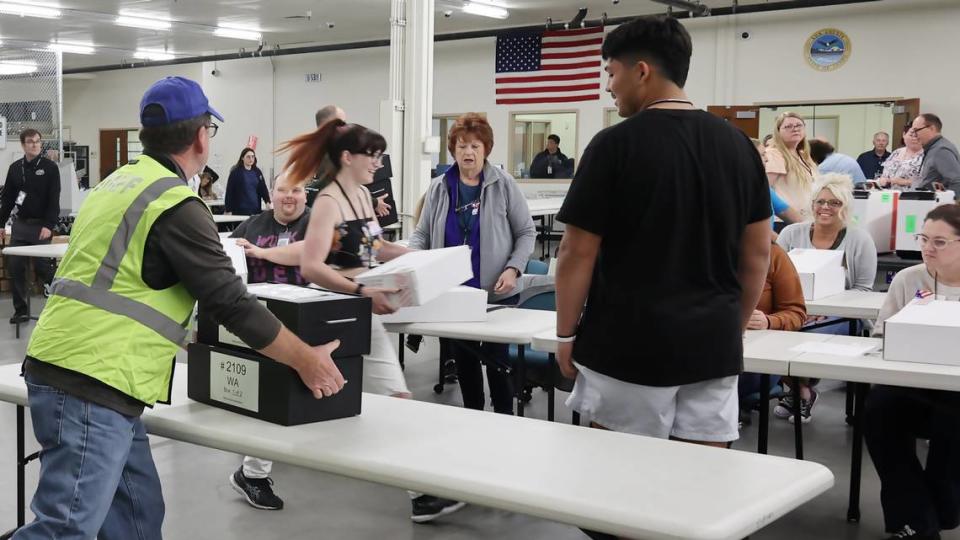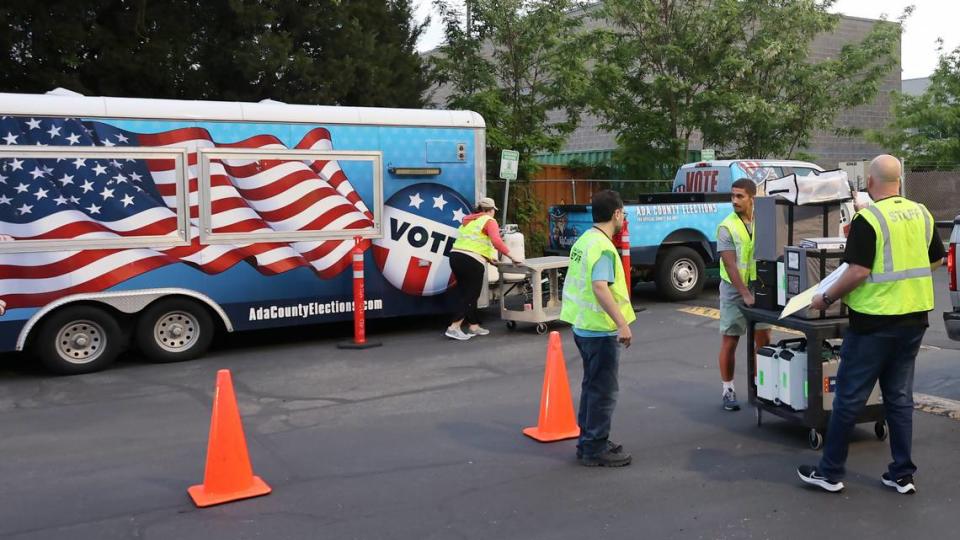Boise-area voter turnout varied widely by district. How did your neighborhood stack up?
In our Reality Check stories, Idaho Statesman journalists seek to hold the powerful accountable and find answers to critical questions in our community. Read more. Story idea? Tips@idahostatesman.com.
Tuesday’s primary election saw about 22% of registered voters show up to the polls in Ada County.
That number was a little lower than the county elections office projected, but still “in the realm of normal” for a primary election, said Jeffrey Lyons, a political science professor at Boise State University.
But that number isn’t the whole story. It masks wide variation in turnout by district and precinct, with more than 100 of the county’s 197 precincts clocking in below 22% turnout, and more than 20 precincts below 15%. At the same time, one district saw turnout closer to 40%, with some of its precincts logging even higher levels.
Lyons called this disparity a “story of the competitiveness of elections.”

In District 10, which covers Middleton, Star and northeast Nampa, Lyons chalked up high turnout, about 39% in the Ada precincts, in part to its high-profile race between 11-term incumbent House Speaker Mike Moyle, R-Star, and Rachel Hazelip, a challenger from Nampa.
Lyons attributed some of the voter activity, too, to “outside money” that targeted some of these races. More than one-third of Moyle’s approximately $73,000 in campaign contributions came from out of state, according to Idaho’s campaign finance reporting website.
Jaclyn Kettler, a political science professor at Boise State University, noted that active campaigns can help clue in voters about the need to go vote — no matter whom they support.
“When we have active campaigns, first of all, there’s a better chance that voters will know there’s an election happening,” Kettler said.
Turnout in District 19, which includes Boise’s North End, landed around 19%. District 17, which includes part of West Boise, ranked last in the county, with only 16.5% of registered voters showing up to the polls. At one precinct in District 18, which includes Southeast Boise and southern Ada County, that number was less than 7%.
In all three of those districts, which usually have higher turnout — in part due to high education and income levels — there were few competitive races this time around. (There were two Ada County Commissioner seats on the ballot, but the Democratic candidates for each seat ran unopposed.)
In those cases, “there’s just not a lot of reasons for folks to show up,” Lyons said.
Take a look at the data for yourself:
Are these low turnout numbers cause for concern?
“It can be a problem,” Lyons said. “A lot of our races are uncompetitive in the general election. We know that the Democrat, whoever it is, is going to win in District 19 next fall. We know that the Republican, whoever it is, will win in District 10. And what that means is that the primary in many ways is the real election. … If we don’t have competition at the primary stage, and the general election is a foregone conclusion, you can definitely make an argument that that’s a problem.”
Turnout in the May 2022 primary — which included statewide offices like governor — was higher: about 32% across Ada County, with 27% in District 17, 29% in District 18 and 33% in District 19. In the November 2022 general election, by comparison, overall turnout was over 60%.

But Lyons noted low turnout also could be “a story about satisfaction” with the incumbent.
“Well, what if people are just so happy with their elected officials, and they think their elected official is great?” he asked. “And as a result, nobody wants to run to challenge that person. Because the writing’s on the wall.”
In a politically polarized environment, where civil disagreement sometimes takes a backseat to personal attacks or even threats of violence, that effect may be felt more deeply, with potential challengers weighing whether they’re up for the verbal and online attacks that may come with running for office.
“I don’t think there’s any doubt that there’s a kind of like suppression effect, where there’s a lot of folks who just say I do not want any part of that,” Lyons said. “So you do end up with some interesting distortions in who does run.”
Even if low turnout stems from contentment with the status quo, Lyons raised concerns about the longer-term effects of voters sitting out elections.
“What does it mean for an elected official to never have to go face a challenger?” he asked. “Does that mean that they can sort of ignore their constituents? Does that mean they can do, maybe, a lackluster job?”
Kettler echoed those arguments, noting that even in cases where challengers may not have much likelihood of winning, their existence may force the incumbent to “be a little more accountable” to voters about what they were doing in office.
“Those types of things can help voters better understand what their elected officials are doing, what they stand for, what their priorities might be,” she said. “In addition to having potential choices to elect someone who might better represent them, it also helps elected officials make sure they’re kind of checked in, that they’re engaged in the job, and that they’re reaching out and trying to understand what their constituents are interested in.”
‘Very organized chaos’: A look at vote counting at the Ada County Elections Office
Ada County commission incumbents win primary races; West Ada voters support schools

